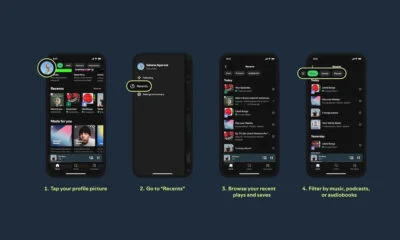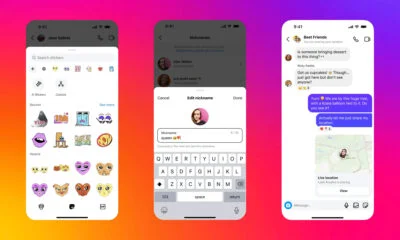News
New Malware Could Mean Trouble For iOS & macOS Security
Security researchers discovered an attack vector that, if exploited, would allow hackers to access messages, photos, and more.

Although Apple’s products are renowned for their robust security, no company is completely immune to hackers and malware. New research has recently revealed an attack vector that can affect Apple’s iPhone and Mac operating systems, allowing criminals to sweep messages, photos, and call history for exploitable data and — even more worryingly — access location data, photos, and the main camera.
The research comes from security firm Trellix, which says that the security flaws rank as “medium to high severity” and bypass the protections Apple puts in place to protect its users.
“The key thing here is the vulnerabilities break Apple’s security model at a fundamental level,” notes Doug McKee, director of vulnerability research at Trellix. McKee thinks his company’s findings could potentially lead to similar bugs being uncovered. However, it’s important to point out that Apple has so far plugged all of the security holes found by Trellix, and there’s no evidence they were ever exploited.
Trellix’s findings build on previous work by Google and Citizen Lab, who jointly discovered malware known as “ForcedEntry”, a zero-click, zero-day iOS exploit linked to Israeli spyware maker NSO Group and found initially on the iPhone of a Saudi activist.
Also Read: Facebook & Instagram Are Testing Twitter-Style Blue Checks
Analysis of ForcedEntry showed that it worked by fooling an iPhone into opening a malicious PDF disguised as a GIF, ultimately bypassing Apple’s sandbox — a protocol that keeps apps from accessing the data stored by other programs and areas of the device.
While Trellix’s findings are worrisome, it’s important to remember that attackers would need to gain a foothold into a device before being able to install any malware, and Apple has been very efficient at issuing security updates. The initial findings relate to macOS 13.2 and iOS 16.3, which were released in January, so it’s vital that readers ensure their devices are fully up to date!
News
Samsung Smart Glasses Teased For January, Software Reveal Imminent
According to Korean sources, the new wearable will launch alongside the Galaxy S25, with the accompanying software platform unveiled this December.

Samsung appears poised to introduce its highly anticipated smart glasses in January 2025, alongside the launch of the Galaxy S25. According to sources in Korea, the company will first reveal the accompanying software platform later this month.
As per a report from Yonhap News, Samsung’s unveiling strategy for the smart glasses echoes its approach with the Galaxy Ring earlier this year. The January showcase won’t constitute a full product launch but will likely feature teaser visuals at the Galaxy S25 event. A more detailed rollout could follow in subsequent months.
Just in: Samsung is set to unveil a prototype of its augmented reality (AR) glasses, currently in development, during the Galaxy S25 Unpacked event early next year, likely in the form of videos or images.
Additionally, prior to revealing the prototype, Samsung plans to introduce…
— Jukanlosreve (@Jukanlosreve) December 3, 2024
The Galaxy Ring, for example, debuted in January via a short presentation during Samsung’s Unpacked event. The full product unveiling came later at MWC in February, and the final release followed in July. Samsung seems to be adopting a similar phased approach with its smart glasses, which are expected to hit the market in the third quarter of 2025.
A Collaborative Software Effort
Samsung’s partnership with Google has played a key role in developing the smart glasses’ software. This collaboration was first announced in February 2023, with the device set to run on an Android-based platform. In July, the companies reiterated their plans to deliver an extended reality (XR) platform by the end of the year. The software specifics for the XR device are expected to be unveiled before the end of December.
Reports suggest that the smart glasses will resemble Ray-Ban Meta smart glasses in functionality. They won’t include a display but will weigh approximately 50 grams, emphasizing a lightweight, user-friendly design.
Feature Set And Compatibility
The glasses are rumored to integrate Google’s Gemini technology, alongside features like gesture recognition and potential payment capabilities. Samsung aims to create a seamless user experience by integrating the glasses with its broader Galaxy ecosystem, starting with the Galaxy S25, slated for release on January 22.


























